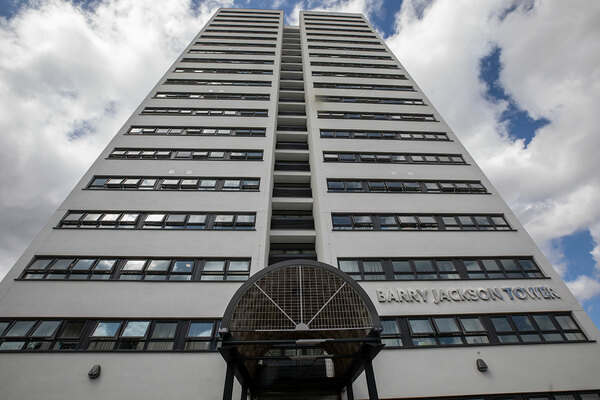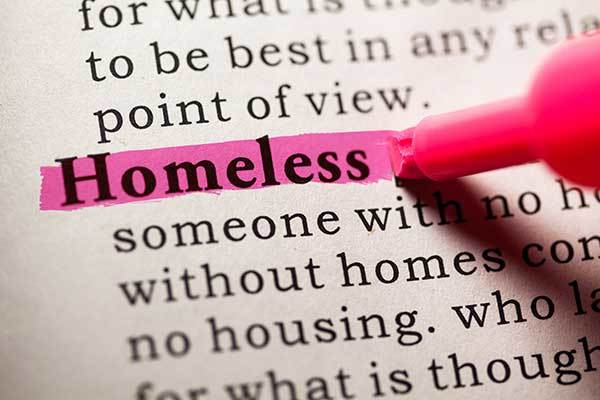You are viewing 1 of your 1 free articles
 Jules Birch
Jules BirchTemporary accommodation has become institutionalised
There are few signs of improvement on the horizon when it comes to families in temporary accommodation, writes Jules Birch
Today’s report by the children’s commissioner on families in temporary accommodation is a shocking indictment of a system that has become institutionalised into permanence.
If you judge it by the types of building involved – the shipping containers and converted office blocks that make most of this morning’s press coverage – you have the physical manifestation of what are almost the opposite of ‘homes’.
For all the effort put into finding ‘meanwhile’ sites for containers and despite the fact that some schemes are well designed and many other forms of temporary accommodation are much worse, just look at the headlines for what the media makes of it.
Children’s commissioner for England Anne Longfield speaks of containers that are “blisteringly hot in summer and freezing in the winter months” and of ‘homes’ in office blocks converted under permitted development that are barely bigger than a parking space.
If you look at the numbers of children affected – just over 124,000 in temporary accommodation at the end of 2018 – you can get some idea of a phenomenon that has almost doubled since 2010.
“The underlying problems are structural ones – years of under-investment in social housing and welfare ‘reform’”
You also begin to appreciate how stretched the terminology has become – analysis for the report says that four out of 10 of those 124,000 children have lived in ‘temporary’ accommodation continuously for at least six months, and one in 20 for at least a year.
And that does not include another 90,000 children sofa-surfing with their families and 375,000 in households at risk of homelessness because they have fallen behind with their rent or mortgage payments.
But it’s the individual stories of the families affected that really bring home what it means to live and be brought up in temporary accommodation. To take just a brief selection:
- The mother and nine-year-old son stuck in a converted office block on an industrial estate who complained about the quality of this temporary accommodation and being stuck outside her local area but could not bid for a permanent home for six months while the council assessed her case
- The mother and four-year-old moved out of area for eight weeks and left with no support from the council
- One mother of four children moved out of area spending £80 a week in travel to get them to and from their school and another who found the journey to school with her daughter took so long that by the time she got ‘home’ it was time to leave to leave to pick her up again
- A mother stuck in a B&B forced to eat out all the time because she was surrounded by drug dealers and people cooking crack in the kitchen
- A child stuck a play space the size of a cot because her mother was too scared to let her out of her sight
- A family in Cornwall with four children under eight who were rehoused 13 times in 18 weeks
Yes, some of these cases are exceptional, and yes, they reflect the impact of austerity on councils and the £195m funding gap in homelessness services that the Local Government Association complained about in its reaction to the report.
And yes, the underlying problems are structural ones – years of under-investment in social housing and welfare ‘reform’.
But what this report shows is the way that a ‘temporary’ system has become institutionalised.
For all the ministerial warning letters, there are still 2,400 families with children in B&Bs including 800 beyond the six-week legal limit – eight times the level in 2010.
Those figures cover only privately owned B&Bs and there are probably even more families living in B&Bs owned by local authorities – at least 1,600 according to Freedom of Information Act research last year based on responses from only 58% of councils.
On top of that, there are families who are not entitled to help with their housing, perhaps because they have been classed as intentionally homeless.
In theory, local authorities have a duty to help under the Children Act, but there is no monitoring of the numbers involved or the quality of the accommodation and no legal limit on how long a family can be housed in a B&B.
A quarter of all the families in temporary accommodation are now in self-contained accommodation that is nightly paid, the very definition of ‘temporary’ but almost certainly more profitable for the providers.
There are now 23,000 families in temporary accommodation outside their local area – four times more than in 2010 – some in neighbouring boroughs but others in cities miles away from home.
With numbers like that, and suffering from years of austerity, it’s little wonder that councils look for savings and efficiencies in their temporary accommodation.
Compared to the costs of bed and breakfast, shipping containers that cost around £35,000 to set up begin to look like a great option, as does shipping families out to cheaper areas.
By devolving the problem to local authorities after cutting their budgets, central government induces these kind of calculations.
The children’s commissioner finds some examples of good practice, including the Capital Letters procurement company launched by 13 London boroughs that aims to reduce competition between them for accommodation.
And she praises Lewisham’s PLACE/Ladywell ‘pop-up village’ of shipping containers for the quality of homes that exceed the London Space Standard and are well insulated and provide a positive environment for children.
“There are few signs that improvement is on the horizon but now would be a good time to start”
But these are positive signs in times that could hardly be more gloomy and not much will change without action at a national level.
The report makes a series of recommendations on everything from proper investment in new homes to action on benefits to prevent the need for temporary accommodation in the first place and reversing permitted development rights office conversions to applying national space standards to improve the experience for families.
And it calls for a formal target for government to reduce the number of children in temporary accommodation.
For context, there were actually more families in temporary accommodation in the mid-2000s than there are now – but the Labour government of the time set a target of halving the numbers by 2010 and achieved it, and also introduced the six-week limit on B&B use.
For all the good things in the Homelessness Reduction Act and all the hard work by local authorities and the voluntary sector, there are few signs that any such improvement is on the horizon – but now would be a good time to start.
Jules Birch, award-winning blogger
At a glance: Homelessness Reduction Act 2017
The Homelessness Reduction Act 2017 came into force in England on 3 April 2018.
The key measures:
- An extension of the period ‘threatened with homelessness’ from 28 to 56 days – this means a person is treated as being threatened with homelessness if it is likely they will become homeless within 56 days
- A duty to prevent homelessness for all eligible applicants threatened with homelessness, regardless of priority need
- A duty to relieve homelessness for all eligible homeless applicants, regardless of priority need
- A duty to refer – public services will need to notify a local authority if they come into contact with someone they think may be homeless or at risk of becoming homeless
- A duty for councils to provide advisory services on homelessness, preventing homelessness and people’s rights free of charge
- A duty to access all applicants' cases and agree a personalised plan














